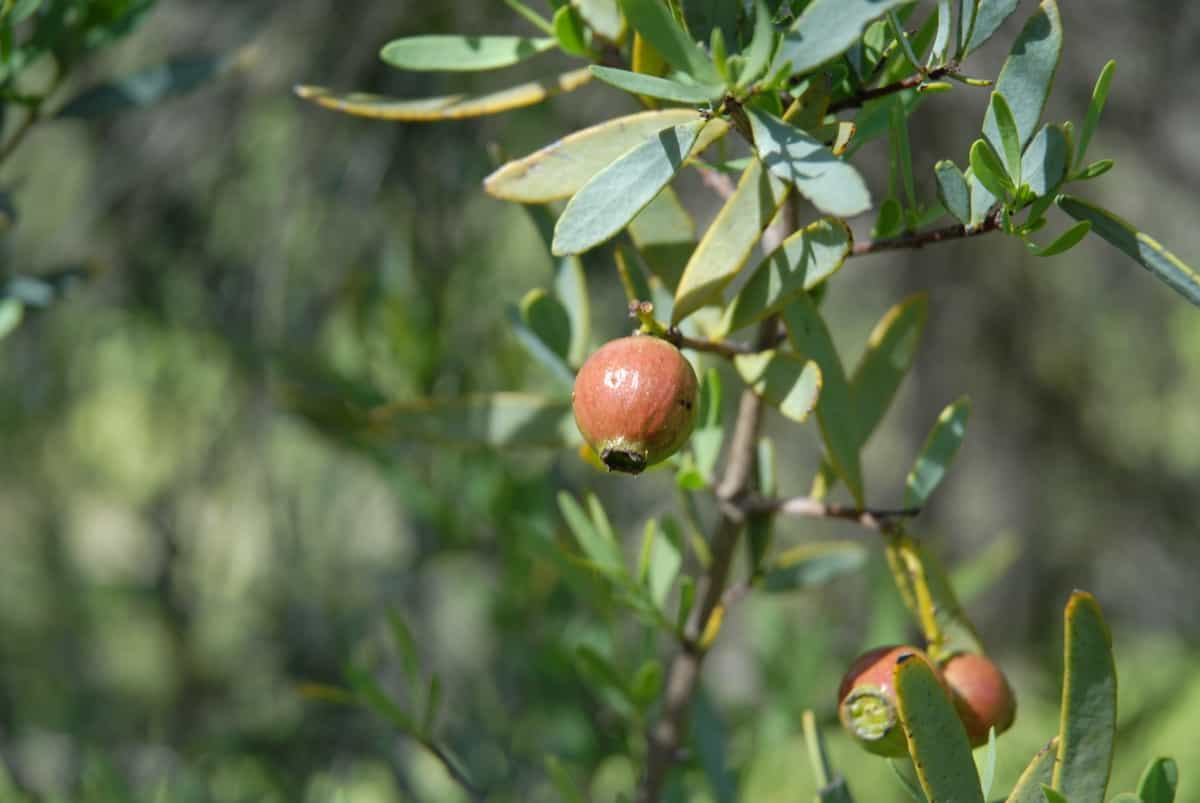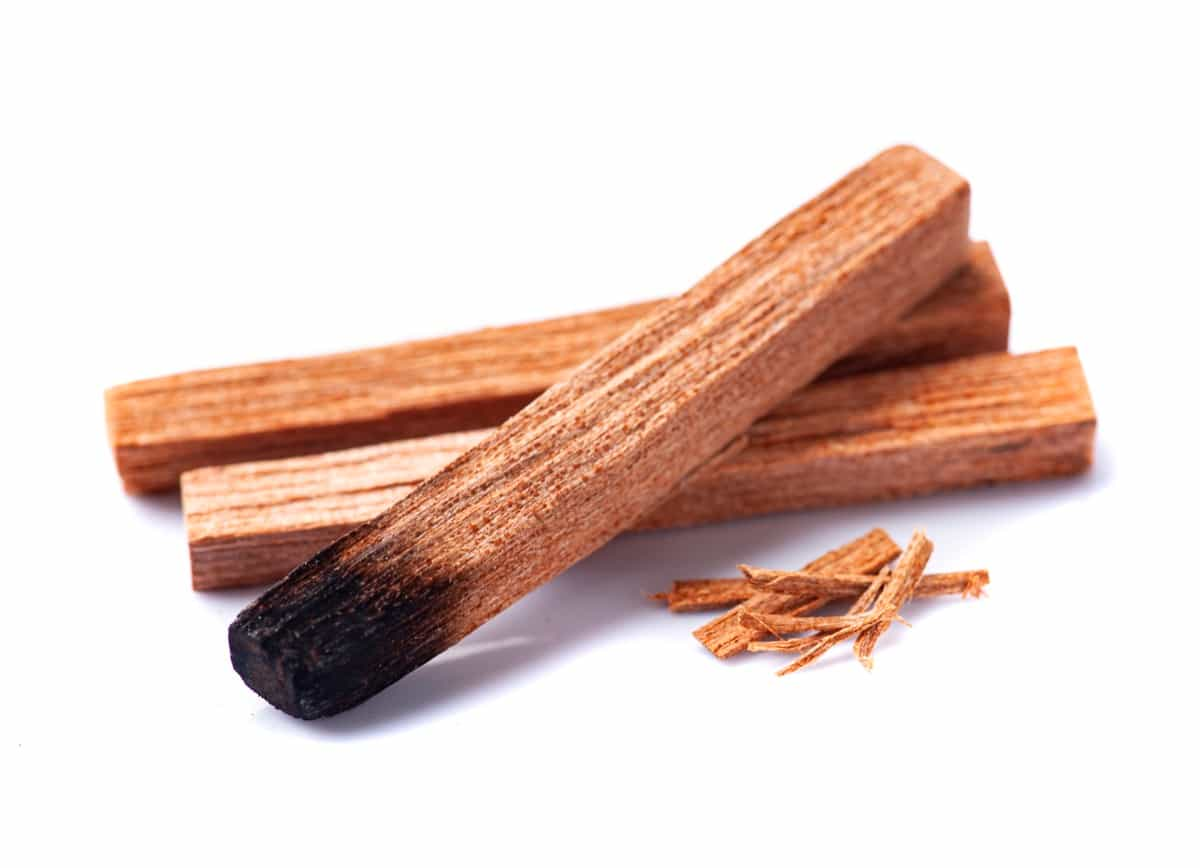Srigandham, also known as Indian Sandalwood, is a highly prized aromatic wood renowned for its distinctive fragrance and various uses. Scientifically classified as Santalum album, this evergreen tree is native to the Indian subcontinent. The heartwood of Srigandham contains valuable essential oils, predominantly composed of santalols, which contribute to its rich scent.

Apart from its cultural significance in religious ceremonies and perfumery, Srigandham is sought after for its medicinal properties and cosmetic applications. The cultivation of Srigandham requires careful attention to soil quality, climate, and sustainable practices to ensure optimal growth and yield.
Select the Ideal Location for Srigandham Cultivation
Choosing an optimal location is vital for successful Srigandham cultivation. The ideal region should have a tropical climate with temperatures (T) between 20 and 28°C and an annual rainfall of 1000 to 2000 mm. Loamy soil with well-drainage capability and a slightly acidic to neutral pH is preferable for Srigandham.
Regions with a low risk of frost and consistent humidity are ideal. Coastal areas with sandy soils are also suitable, contributing to the plant’s growth and oil production. Additionally, selecting a location with proper sunlight exposure and protection from strong winds ensures optimal development of the Srigandham trees.
Soil Preparation and Management for Srigandham Plantation
Begin by plowing the soil to a depth of 30 cm and incorporating well-rotted organic matter. This enhances soil structure, water retention, and nutrient content. Irrigation systems, such as drip irrigation, should be in place to maintain consistent moisture levels, particularly during the initial growth stages. Regular weeding is essential to reduce competition for nutrients and promote better growth.
Applying an organic mulch around the Srigandham tree’s base helps to retain soil moisture and suppress weed growth. Monitoring soil pH is important, as Srigandham prefers a slightly acidic to neutral range. Implementing these soil preparation and management practices will contribute to the overall success of Srigandham cultivation.
Propagate Srigandham: Seeds Vs. Clones
Seeds
Growing Srigandham from seeds is a natural and cost-effective method. However, it requires patience as the germination process can take several weeks to months. Seeds offer genetic diversity, potentially resulting in trees with varied characteristics. This diversity can be beneficial in adapting to different environmental conditions. On the downside, seed-grown plants may exhibit variations in oil content and quality.
Clones
Cloning involves the reproduction of Srigandham from cuttings or tissue cultures. This method ensures genetic uniformity, maintaining the desirable traits of the parent plant. Cloning allows for the replication of superior individuals with high oil content and quality. It also provides a faster and more predictable propagation process compared to seeds.
In case you missed it: 1-Acre Melia Dubia Cultivation Project Report: Economics for Costs and Profits in Malabar Neem Farm

However, the initial setup for cloning can be more resource-intensive, and the lack of genetic diversity may make the population susceptible to specific pests or diseases. Ultimately, the choice between seeds and clones depends on the specific goals of the cultivation, the resources available, and the desired balance between genetic diversity and uniformity in the Srigandham plantation.
Optimal Climate Conditions for Cultivation of Srigandham
Srigandham, or Sandalwood, thrives in optimal climate conditions characterized by a tropical to subtropical climate. The ideal temperature range for Srigandham growth is between 20 to 28 °C. It requires abundant sunlight for photosynthesis and prefers well-drained, sandy-loam soils. Adequate rainfall, ranging from 1000 to 2000 mm annually, supports healthy growth.
The plant benefits from a distinct dry season, inducing stress that promotes the formation of the highly aromatic heartwood. Regions with a reliable water source for irrigation during dry periods are advantageous. Overall, a climate with warm temperatures, ample sunlight, and a well-defined seasonal cycle contributes to the successful cultivation of Srigandham.
Srigandham Plant Spacing and Number of Plants Per Acre
The spacing of Srigandham plants is crucial for optimal growth, ensuring proper air circulation and access to sunlight. For Srigandham cultivation, a recommended spacing of 2.5 to 3 meters between individual plants is often followed. This wider spacing allows each tree to develop a well-branched canopy and encourages the desired heartwood formation. The number of Srigandham plants per acre depends on the selected spacing. With a spacing of 2.5 to 3 meters, you can accommodate approximately 400 to 576 plants per acre.
Watering and Irrigation Practices for Srigandham
Srigandham, or Sandalwood, requires careful watering and irrigation practices to ensure healthy growth. During the initial years, regular watering is essential to establish young plants. However, once established, Srigandham is relatively drought-tolerant.
It is crucial to provide well-drained soil to avoid waterlogging, which will be detrimental to the roots—Irrigate during dry periods, especially in regions with a distinct dry season. A balanced approach, avoiding excessive moisture, is vital to prevent root diseases. Additionally, a reliable water source and efficient irrigation systems contribute to the sustainable cultivation of Srigandham.
Nutrient Management in Srigandham Cultivation
Srigandham benefits from well-balanced fertilization with an emphasis on organic matter. Incorporating organic amendments enhances soil structure and nutrient content. Balanced fertilizers, especially those with a higher phosphorus content, support robust root development and heartwood formation.
Regular soil testing helps tailor nutrient application based on specific requirements. However, excessive fertilization should be avoided, as Srigandham is sensitive to nutrient imbalances. A holistic approach to nutrient management promotes the overall health and productivity of Srigandham plantations, ensuring optimal conditions for heartwood production.
Pest and Disease Control in Srigandham Plantations
Integrated pest management strategies are employed, combining cultural practices and biological controls, along with judicious use of chemical agents. Regular monitoring helps identify potential threats early, facilitating prompt intervention. Natural predators and beneficial organisms are encouraged to maintain a balanced ecosystem.
Additionally, the use of organic pesticides and environmentally friendly methods aligns with sustainable agricultural practices. Rigorous adherence to hygiene protocols, proper irrigation, and maintaining optimal planting densities further contribute to a robust defense against pests and diseases, fostering the overall well-being of the Srigandham plantations.
Prune and Train Techniques for Srigandham Trees
Pruning involves the removal of dead or excess branches, enhancing sunlight penetration and air circulation. Proper pruning also shapes the tree for improved aesthetics and facilitates ease of harvesting. Training focuses on guiding the tree’s growth pattern by supporting the development of a strong central leader and well-spaced lateral branches. This ensures a sturdy and well-balanced canopy.
In case you missed it: Cost of Drip Irrigation Per Acre for Mango Plantation: Exploring Installation Costs Along with Subsidy

Additionally, training aids in preventing the formation of competing leaders, promoting uniform growth. Regular pruning and training sessions contribute to the overall health of Srigandham trees, supporting their longevity and the production of high-quality heartwood for commercial use.
Harvesting and Processing Srigandham for Maximum and Quality
Harvesting is strategically timed, typically when the trees reach maturity (15-20 years), ensuring optimal heartwood development. Only well-established heartwood is harvested to guarantee high oil content and quality. Careful extraction methods, like steam distillation, preserve the aromatic compounds. Post-harvest, the wood undergoes a meticulous drying process to prevent degradation and enhance oil concentration.
Quality control measures, including rigorous testing and adherence to industry standards, are integral throughout processing. Sustainable practices, such as replanting, further secure the future of Srigandham cultivation. The synergy of these methods ensures maximum yield and superior quality in Srigandham oil, meeting the demands of discerning markets.
Srigandham Yied Per Acre in India
The yield of Srigandham (Indian Sandalwood) per acre may change based on several factors, including the age of the trees, soil quality, climate conditions, and cultivation practices. Generally, sandalwood trees take around 15 to 20 years to reach maturity and produce heartwood, which is the valuable part used for oil extraction.
On average, a well-managed sandalwood plantation might yield approximately 100 to 200 kilograms of heartwood per acre. However, these figures can vary, and some plantations may achieve higher yields with optimal agricultural practices.
Conclusion
Understanding Srigandham involves careful consideration of cultivation factors. In India, Srigandham yields, coupled with sustainable practices, underscore the potential for a thriving industry. Success hinges on holistic cultivation practices for this prized aromatic resource.
- Feed Your Flock for Less: Top 10 Tips to Save on Chicken Feed
- Ultimate Guide to Ossabaw Island Hog: Breeding, Raising, Diet, and Care
- Hatching Answers: The Top 10 Reasons Your Chickens Aren’t Laying Eggs
- Eggs and Economics: Breaking Down the Cost of Raising Backyard Chickens
- Defend Your Greens: Proven Methods to Keep Iguanas Out of Your Garden
- Ultimate Guide to Cinnamon Queen Chicken: A Comprehensive Guide for Beginners
- Ultimate Guide to California Tan Chicken: Breeding, Raising, Diet, Egg-Production and Care
- Ultimate Guide to Marsh Daisy Chicken: Breeding, Raising, Diet, and Care
- 10 Types of Chicken Farming Businesses You Can Start for Profits